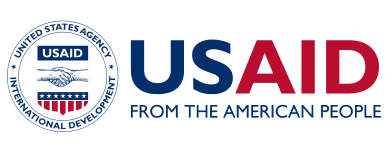Launched on July 30, 2018, Asia EDGE (Enhancing Development and Growth through Energy) furthers the U.S. vision for a free and open Indo-Pacific to ensure peace, stability, and growing prosperity in the region. Asia EDGE is a whole-of-government endeavor by eight U.S. Government agencies, led by the Department of State and includes participation by the United States Agency for International Development, Department of Commerce, Department of Energy, Export-Import Bank of the United States, Development Finance Corporation, U.S. Trade and Development Agency, and the Department of the Treasury.Treasury.

Asia EDGE currently focuses on markets across the Indo-Pacific region, including: Australia, Bangladesh, Bhutan, Brunei, Burma, Cambodia, China, India, Indonesia, Japan, Laos, Malaysia, Maldives, Mongolia, Nepal, New Zealand, Pacific Island Forum Countries, Papua New Guinea, Philippines, Singapore, South Korea, Sri Lanka, Taiwan, Thailand, Timor Leste, and Vietnam.

Asia EDGE builds on decades of robust U.S. government policy and programmatic work in the region and recognizes that enhanced coordination among the U.S. government agencies will better accelerate U.S. government engagement that will ultimately benefit the region and the United States. Asia EDGE signals a long-term commitment for the region. Read about the Asia EDGE objectives here.
Under Asia EDGE, USAID plays a leading role helping its Indo-Pacific partners expand energy access, promote energy diversification and trade, and strengthen energy security across the region. USAID is leveraging its technical expertise, enduring regional presence, and convening power to help the Indo-Pacific region overcome its energy constraints. USAID efforts under Asia EDGE focuses on four primary areas

- Utility Modernization: USAID helps advance the financial viability and efficiency of local power utilities through the modernization and expansion of transmission and distribution systems. USAID is also fostering the adoption of cybersecurity measures and sector and regulatory reforms, such as tariff restructuring.
- Increased Deployment of Energy Technologies: USAID support to the electricity and gas sectors prioritizes least-cost, long-term planning and efficient integration of transformative technologies, including battery storage, smart grids, electric vehicles, modern gas systems, and energy efficient products and practices.
- Transparent, Best Value Procurement: USAID promotes transparent, competitive energy procurement practices, including auctions, quality standards, and the legal and regulatory frameworks that enable a wide range of private sector participation in the energy sector.
- Regional Energy Trade and Integration: USAID helps develop legal and regulatory frameworks that enable power and gas trade and the development of power markets, including regional power exchanges. This effort will build on and leverage bilateral initiatives, including electricity market expansion, that strengthen and prepare individual countries for regional coordination and integration. It will also focus on expanding the downstream regional market for natural gas and LNG imports.
External web links
https://www.usaid.gov/indo-pacific-vision/nrm/asia-edge

